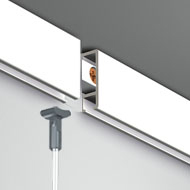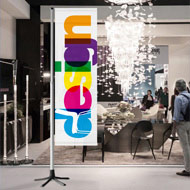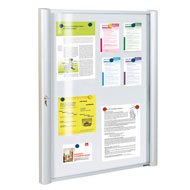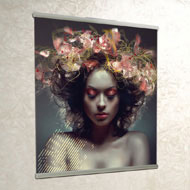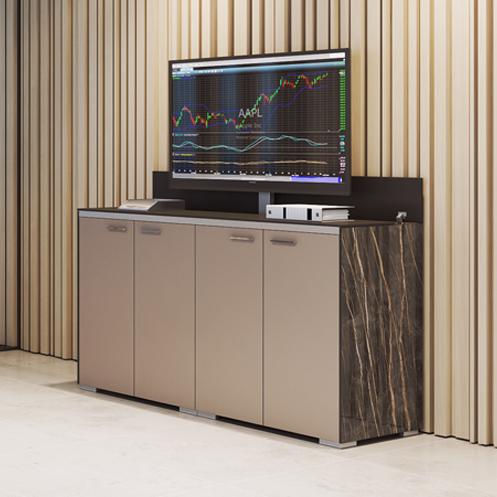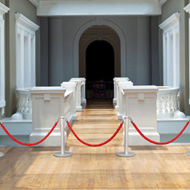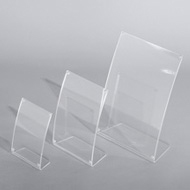Künstliches Glas - welche Sorten gibt es?
Montag, 1. Juni 2020
Transparente Kunststoffe, die oft als Bastelglas, Kunstglas oder Acrylglas angeboten werden, erobern den Markt. Für den Laien ist es schwer, die verschiedenen Sorten zu unterscheiden. Sie fragen sich, welche Unterschiede zwischen Plexiglas®; und Acrylglas bestehen. Oder was sich hinter Buchstabenkombinationen wie PMMA, PC, PS und GS verbirgt. Dieser Text führt Sie in die Geheimnisse der künstlichen Gläser ein.
Die wichtigsten transparenten Kunststoffe sind Polymethylacrylat (PMMA, Acrylglas), Polycarbonat (PC), Polystyrol (PS), Polyethylenterephthalat (PET) und Styrol-Acrylnitril-Copolymere (SAN). Weitere Bezeichnungen sind lediglich Markennamen wie PLEXIGLAS®, andere sind ein Hinweis auf das Herstellungsverfahren (wie GS für "gegossen" bzw. XT für "extrudiert").
Weitere Markennamen für Acrylglas sind Piacryl®, Deglas®, Hesalitglas®, Limacryl®, PerClax® und Vitroflex®.
Das Material wurde 1928 in verschiedenen Ländern unabhängig voneinander entwickelt. 1940 kam es erstmals als Kontaktlinsen zum Einsatz. Die Haube der Plattenspieler-Kombinationen Braun SK 4 war das erste Alltagsprodukt aus Acrylglas. Es kam 1956 auf den Markt.
Das Material ist gut einfärbbar, witterungs- und alterungsbeständig. Obwohl Acrylglas lichtdurchlässig ist, absorbiert es UV-Strahlen und ist somit UV-stabil. Es ist allerdings kratzempfindlicher als Glas oder Polycarbonat, dafür lässt es sich polieren, um Kratzer zu entfernen.
Bei der Reinigung ist zu beachten, dass Acrylglas zwar beständig gegen Säuren, Laugen mittlerer Konzentration, Benzin und Öl ist, aber Ethanol, Aceton und Benzol lösen es an.
Für Schilder und Werbematerialien eignet sich Acrylglas wegen der schöneren Optik und der glasklaren Transparenz besser als andere Kunstglas-Arten.

Das Material entdeckte der Chemiker Alfred Einhorn im Rahmen seiner Forschungen bereits 1898. Da er sich aber mit der Entwicklung von Betäubungsmitteln befasste, interessierte ihn der Stoff nicht. So entwickelte die Bayer AG den Kunststoff erst 1953 weiter und brachte ihn 1958 als Makrolon®; auf den Markt. 1973 begann die General Electric mit der Produktion unter dem Handelsnamen Lexan®.
PC ist weniger UV-stabil (vergilbt) als Acrylglas. In der Praxis sind die im Vergleich zu Acrylglas höhere Kratzfestigkeit und die bessere Beständigkeit gegen Chemikalien von Bedeutung. Auch lässt sich PC kalt biegen. Ein weiterer Vorteil von PC gegenüber Acrylglas sind die höhere Schlagfestigkeit und das Brandverhalten. Platten aus Polycarbonat erreichen die Brandschutznorm DIN 4102 B1.
Bedingt durch den höheren Preis (doppelt bis dreimal teurer) und die geringere Transparenz (PC streut das Licht), kommt das Material eher bei Flugzeugfenstern, Kfz-Scheinwerferglas und der Gewächshausverglasung zum Einsatz, da hier Bruchfestigkeit und Kratzfestigkeit wichtig sind. Ein typisches Produkt aus Polycarbonat im privaten Bereich sind transparente Wellplatten und Doppelstegplatten für Verkleidungen sowie CDs und DVDs.
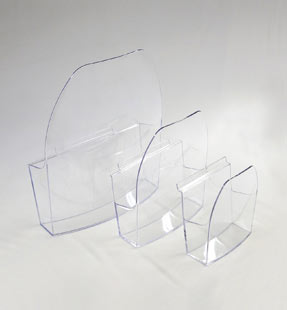
PS splittert nicht und lässt sich wie Acrylglas einfach verarbeiten - ob schneiden, sägen, bohren oder kleben. Teilweise ist die Verarbeitung vom PS sogar noch einfacher als vom Acryl, darum ist dieses Material auch für Anfänger gut geeignet.
Polystyrol ist allerdings im Gegensatz zu Acrylglas absolut nicht UV-verträglich. Daher ist es ausschließlich für den Einsatz im Innenraum geeignet.
SAN weist eine höhere Festigkeit, thermische Beständigkeit und Kratzfestigkeit als Acrylglas auf, ist aber weniger UV-stabil, hat eine geringere Schlagzähigkeit und eine leicht gelbliche Färbung. Es ist anders als Polycarbonat nicht zum Klipsen geeignet. Übliche Markennamen sind Luran®, Lustran®, Styvex® und Suprel®.
Die wichtigsten transparenten Kunststoffe sind Polymethylacrylat (PMMA, Acrylglas), Polycarbonat (PC), Polystyrol (PS), Polyethylenterephthalat (PET) und Styrol-Acrylnitril-Copolymere (SAN). Weitere Bezeichnungen sind lediglich Markennamen wie PLEXIGLAS®, andere sind ein Hinweis auf das Herstellungsverfahren (wie GS für "gegossen" bzw. XT für "extrudiert").

Acrylglas (Polymethylacrylat; PMMA)
Handelsnamen für Acrylglas
Bedingt durch Patente verwenden einige Firmen regional unterschiedliche Handelsnamen. Otto Röhm meldete 1933 den Markennamen Plexiglas®; an. Bis heute ist dies der eingetragene Markenname der Röhm GmbH in Europa und Asien. In den USA nutzt die Altuglas International (Arkema Gruppe) den Namen. Röhm bietet Acrylglas daher dort unter dem Namen Acrylite® an und die Arkema Gruppe verwendet die Namen Altuglas® und Oroglas® in Europa.Weitere Markennamen für Acrylglas sind Piacryl®, Deglas®, Hesalitglas®, Limacryl®, PerClax® und Vitroflex®.
Das Material wurde 1928 in verschiedenen Ländern unabhängig voneinander entwickelt. 1940 kam es erstmals als Kontaktlinsen zum Einsatz. Die Haube der Plattenspieler-Kombinationen Braun SK 4 war das erste Alltagsprodukt aus Acrylglas. Es kam 1956 auf den Markt.
Eigenschaften von Acrylglas
PMMA lässt sich ab einer Temperatur von 100°C plastisch verformen. Es eignet sich für eine spanabhebende Bearbeitung (Bohren, Fräsen), lässt sich ausgezeichnet mit CO2-Lasern schneiden oder gravieren. Verbindungen sind durch Kleben und Schweißen möglich.Das Material ist gut einfärbbar, witterungs- und alterungsbeständig. Obwohl Acrylglas lichtdurchlässig ist, absorbiert es UV-Strahlen und ist somit UV-stabil. Es ist allerdings kratzempfindlicher als Glas oder Polycarbonat, dafür lässt es sich polieren, um Kratzer zu entfernen.
Bei der Reinigung ist zu beachten, dass Acrylglas zwar beständig gegen Säuren, Laugen mittlerer Konzentration, Benzin und Öl ist, aber Ethanol, Aceton und Benzol lösen es an.
Für Schilder und Werbematerialien eignet sich Acrylglas wegen der schöneren Optik und der glasklaren Transparenz besser als andere Kunstglas-Arten.

Polycarbonat (PC)
Handelsnamen für PC
Die bekanntesten Markennamen sind Makrolon®; und Lexan®;, zusätzlich gibt es eine Vielzahl weiterer Bezeichnungen wie ASTALON, Carboglass™, Carbolux®, Macrolux®, Sicoklar®; und Sparlux®;.Das Material entdeckte der Chemiker Alfred Einhorn im Rahmen seiner Forschungen bereits 1898. Da er sich aber mit der Entwicklung von Betäubungsmitteln befasste, interessierte ihn der Stoff nicht. So entwickelte die Bayer AG den Kunststoff erst 1953 weiter und brachte ihn 1958 als Makrolon®; auf den Markt. 1973 begann die General Electric mit der Produktion unter dem Handelsnamen Lexan®.
Eigenschaften von PC
Beim PC handelt sich um glasklaren Kunststoff, der sich durch seine hohe Steifigkeit und Dimensionsstabilität und ausgezeichnete Beständigkeit gegen Witterungseinflüsse und Alterung auszeichnet. Außerdem hat Polycarbonat die höchste Kratzfestigkeit aller Kunststoffe.PC ist weniger UV-stabil (vergilbt) als Acrylglas. In der Praxis sind die im Vergleich zu Acrylglas höhere Kratzfestigkeit und die bessere Beständigkeit gegen Chemikalien von Bedeutung. Auch lässt sich PC kalt biegen. Ein weiterer Vorteil von PC gegenüber Acrylglas sind die höhere Schlagfestigkeit und das Brandverhalten. Platten aus Polycarbonat erreichen die Brandschutznorm DIN 4102 B1.
Bedingt durch den höheren Preis (doppelt bis dreimal teurer) und die geringere Transparenz (PC streut das Licht), kommt das Material eher bei Flugzeugfenstern, Kfz-Scheinwerferglas und der Gewächshausverglasung zum Einsatz, da hier Bruchfestigkeit und Kratzfestigkeit wichtig sind. Ein typisches Produkt aus Polycarbonat im privaten Bereich sind transparente Wellplatten und Doppelstegplatten für Verkleidungen sowie CDs und DVDs.

Polystyrol (PS)
Polystyrol ist ein lichtdurchlässiger, robuster Kunststoff. Seine Bruchfestigkeit ist ca. 10 mal höher als beim Echtglas.PS splittert nicht und lässt sich wie Acrylglas einfach verarbeiten - ob schneiden, sägen, bohren oder kleben. Teilweise ist die Verarbeitung vom PS sogar noch einfacher als vom Acryl, darum ist dieses Material auch für Anfänger gut geeignet.
Polystyrol ist allerdings im Gegensatz zu Acrylglas absolut nicht UV-verträglich. Daher ist es ausschließlich für den Einsatz im Innenraum geeignet.
Polyethylenterephthalat (PET) und Styrol-Acrylnitril-Copolymere (SAN)
Während PET nahezu ausschließlich für Folien und Kunststoffflaschen verwendet wird, ist SAN auch als "Glasersatz" im Einsatz. Lichtleiter bestehen häufig daraus, auch Optikkörper wie Sensoren und transparente Teile von Küchenmaschinen. SAN kann auch wie Acrylglas für Duschkabinenwände verwendet werden.SAN weist eine höhere Festigkeit, thermische Beständigkeit und Kratzfestigkeit als Acrylglas auf, ist aber weniger UV-stabil, hat eine geringere Schlagzähigkeit und eine leicht gelbliche Färbung. Es ist anders als Polycarbonat nicht zum Klipsen geeignet. Übliche Markennamen sind Luran®, Lustran®, Styvex® und Suprel®.













